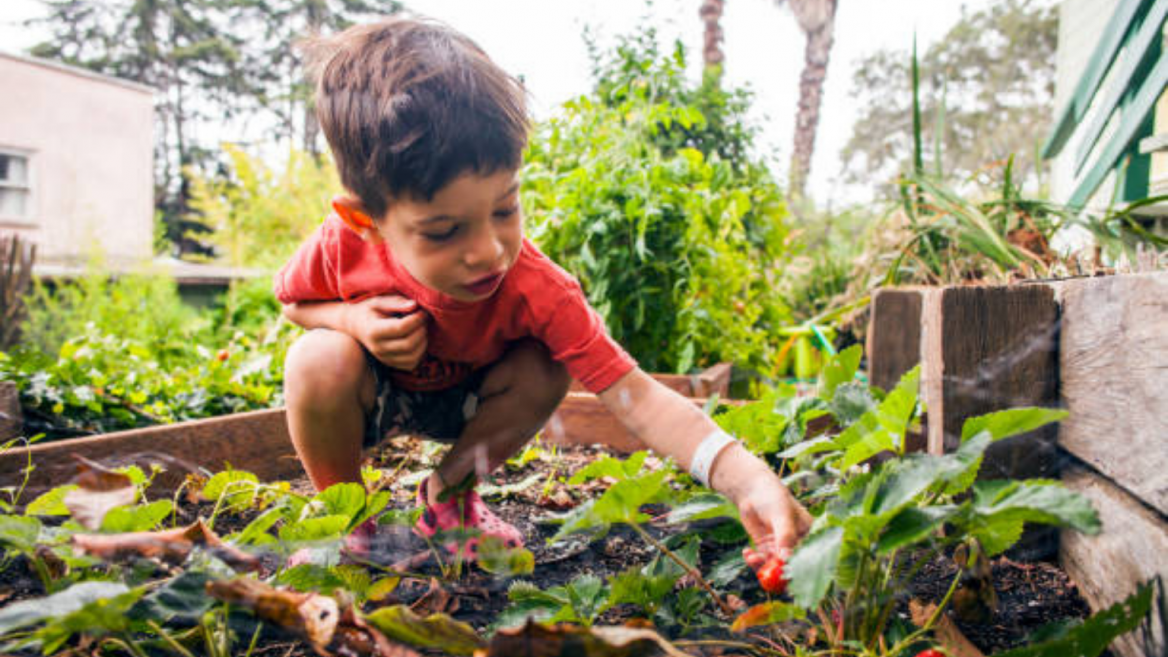
SAGE project at ASU brings garden curriculum to Valley campuses
By
—
Who doesn’t love a garden? Turning the soil and planting seeds or seedlings just so, then watering and witnessing subtle, then significant growth over time. It is a gratifying experience that, if done right, can lead to tasty ones.
Of course, there are also plenty of literal lessons to be learned in the process, which is part of the reason why gardens have become so popular in schools in the United States.
According to data provided by the United States Department of Agriculture, in 2017 there were gardens at more than 7,000 schools nationwide.
Professor Rebecca Lee from Arizona State University's Edson College of Nursing and Health Innovation is adding to that number. She’s the principal investigator of a research program currently underway in the Phoenix area called Sustainability via Active Garden Education or SAGE.
“SAGE was developed to help early care and education centers meet national physical activity, nutrition and education standards. So, the primary goal of SAGE is to help kids be more physically active and learn about fruits and veggies while they are at their early care and education center,” Lee said.
Lee and her team work with early care and education centers in underserved areas of the Valley. In order for a center to be part of SAGE, they must be Child and Adult Care Food Program eligible.
Although starting a school garden is extremely beneficial, maintaining it beyond the initial planting cycle can be tough for schools. We spoke with Lee to dig a little deeper into this growing movement and to learn how a protocol like SAGE can help schools sustain their efforts.
Question: What are some of the benefits of having a garden program in early child care and education settings?
Answer: First, we know that this is the optimal stage in a child’s development for them to create physical activity and healthy eating habits. So exposing these young minds to the benefits of consistent physical activity and consuming fresh fruits and vegetables at a young age can have a lifelong impact.
Second, studies have shown gardens provide kids hands-on experience with science concepts, which can lay the groundwork for more advanced learning later on. In the SAGE program, kids learn about all the different elements plants need to grow: soil, sun, water, etc. Our current and past SAGE teachers tell us the children are able to connect the dots between a healthy garden and a healthy body, understanding that they too need proper nutrition, physical activity and water every day to grow big and strong.
Third, kids who get daily physical activity are more focused, which can translate to better behavior overall as well as improved grades and school attendance.
Q: Why is it important for schools to maintain garden programs?
A: In addition to everything above, introducing kids to gardens is an effective way to help them learn where food comes from. That link is especially important now because as food technology has improved, some of the connection of how the food gets from the farm to the table has been lost. Garden programs help to rebuild that connection.
Q: What are some of the reasons centers do not continue to keep up their gardens?
A: Many early care and education centers are really excited about having gardens, but we found that in cases where they were not maintained, lack of a maintenance strategy or interest were the primary reasons. Even though gardens are not expensive, they require consistent attention and planning by school staff. A few of the locations we worked with (about 25%) in SAGE were not able to overcome those obstacles. Centers that are able to designate a garden champion and implement a maintenance schedule into their daily school routine usually have the most success.
Q: How can SAGE help increase the sustainability of garden projects?
A: At the beginning of the SAGE programs the team provides teacher training, helps to build a garden on site, as well as ongoing technical support. Midway through the program, we complete a booster session to help teachers and schools with anything that they might be missing to help implement the curriculum and garden. Then, toward the end of the SAGE formal programming, we link teachers and directors to our experts who serve on our community advisory board. These are local experts and master gardeners who have connections to resources the schools may need to sustain their gardens.
Q: How can someone get involved in SAGE?
A: We are presently looking for early care and education centers for our SAGE fall 2019 cohort. Interested centers should contact our project director, Hector Valdez, for more information at 602-496-2011 or visit our website.

